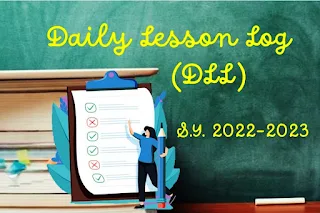|
GRADES 1 to 12 DAILY LESSON LOG |
School: |
|
Grade Level: |
III |
|
Teacher: |
|
Learning Area: |
SCIENCE |
|
|
Teaching Dates and Time: |
MARCH
20-24, 2023 (WEEK 6) |
Quarter: |
3RD
QUARTER |
|
|
MONDAY |
|
I
OBJECTIVES |
|
|
A.
Content Standard |
The learners
demonstrate an understanding of… sources and
uses of light, sound, heat, and electricity |
|
B.
Performance Standard |
The learners
demonstrate an understanding of… apply the
knowledge of the sources and uses of light, sound, heat, and electricity |
|
C.
Learning Competency |
Enumerate the uses of heat S3FE – IIIi- j -3 |
|
II
CONTENT |
Enumerating Sources of Heat |
|
III. LEARNING RESOURCES |
|
|
A. References |
|
|
1. Teacher’s Guide Pages |
CG p.20 of 64 |
|
2. Learner’s Materials pages |
|
|
3. Textbook pages |
|
|
4. Additional Materials from
Learning Resources |
|
|
B. Other Learning Resources |
|
|
IV. PROCEDURES |
|
|
A. Reviewing the previous lesson or
presenting the new lesson |
|
|
B. Establishing a purpose for
the lesson |
Why is heat important to us? Can you live without heat? |
|
C. Presenting Examples/instances
of new lesson |
Do Activity 6 per group. |
|
D. Discussing new concepts and
practicing new skills #1 |
- What are other things that is being sources of heat? |
|
E. Discussing new concepts and practicing new
skills #2 |
|
|
F. Developing mastery (Leads to Formative Assessment) |
|
|
G. Finding Practical
applications of concepts and skills |
Divide the pupils into three. 1- draw things that are sources of heat 2- list down things that are sources of heat. |
|
H. Making generalizations and
abstractions about the lesson |
- How do we produce heat? |
|
I. Evaluating Learning |
Match the sources of heat on the left with their uses. 1. flat iron a. for
boiling water 2. gas stove b. used for cooking 3. airport c. to keep
warm 4.oven d. used to press
clothes 5. fireplace e. food
warming |
|
J. Additional activities for
application or remediation |
Read on about the other uses of heat. |
|
V. REMARKS |
|
|
VI. REFLECTION |
|
|
A. No. of learners who earned
80% on the formative assessment |
|
|
B. No. of Learners who require
additional activities for remediation |
|
|
C. Did the remedial lessons
work? No. of learners who have caught up with the lesson. |
|
|
D. No. of learners who continue
to require remediation |
|
|
E. Which of my teaching strategies
worked well? Why did these work? |
|
|
F. What difficulties did I
encounter that my principal or supervisor can help me solve? |
|
|
G. What innovation or localized
materials did I use/discover that I wish to share with other teachers? |
|
Softcopy:
DLL_ARALING PANLIPUNAN 3_Q3_W6
DLL_ENGLISH 3_Q3_W6
DLL_ESP 3_Q3_W6
DLL_FILIPINO 3_Q3_W6
DLL_MAPEH 3_Q3_W6
DLL_MTB 3_Q3_W6
DLL_SCIENCE 3_Q3_W6
DLL_MATHEMATICS 3_Q3_W6























